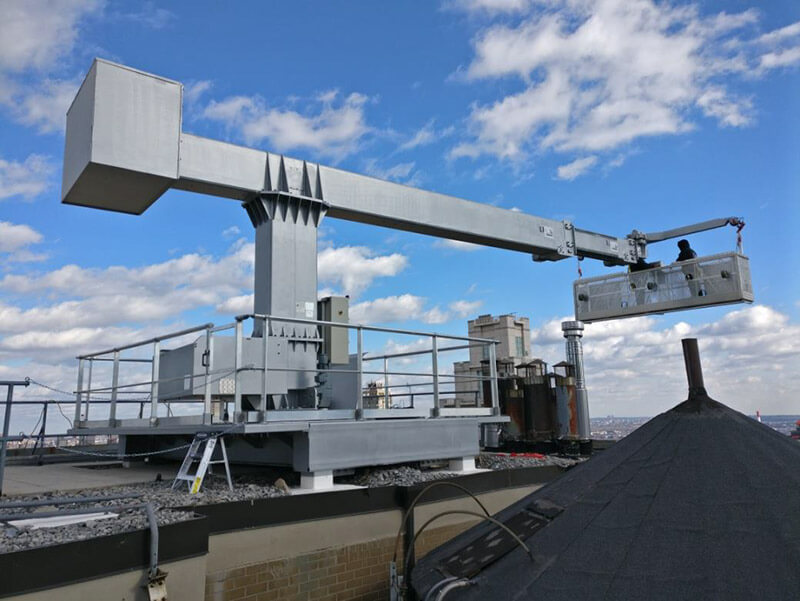
The towering skyscrapers that grace the skyline of the Philippines are not just architectural marvels but also symbols of progress and innovation. However, maintaining these soaring structures is no small feat. This is where Building Maintenance Units (BMUs) come into play. In this blog post, we’ll explore the significance of BMUs in the Philippines and how they ensure the continued splendor of these iconic buildings.
A Building Maintenance Unit, often referred to as a BMU, is a specialized crane-like system designed to hang from a building’s roof. Its purpose is to systematically enable maintenance tasks on the facade of high-rise structures. These platforms can extend over 2 meters and are supported by a multi-layer drum hoist and four separate wire ropes. BMUs can even include auxiliary hoists for tasks like glass replacement and heavy-duty maintenance. In the context of the Philippines, where skyscrapers abound, BMUs have become indispensable tools for ensuring that these architectural giants remain in pristine condition.
The maintenance tasks that BMUs facilitate are nothing short of remarkable. Architects, builders, and maintenance personnel rely on BMUs to address facade challenges. From cleaning and painting to window replacement and structural inspections, BMUs provide a safe and efficient means of maintaining the building’s exterior. The use of BMUs ensures that the facade remains as magnificent as the day it was constructed.
FBA Gomyl plays a pivotal role in providing high-quality BMUs in the Philippines. These BMUs are customized using standardized components, ensuring they can reach and maintain all parts of a building’s facade, even those with an outreach exceeding 30 meters. FBA Gomyl’s commitment to quality and adherence to international standards make them a reliable partner for building maintenance solutions in the Philippines.
The advantages of using BMUs for building maintenance are numerous. They are the go-to solution for tall buildings, as they can safely cover the entire perimeter of a structure. The modular nature of BMUs allows for easy augmentation or exclusion of elements, ensuring flexibility to meet specific building maintenance needs. The best part is that operating a BMU does not require a Rope Access Technician Certification, making it a viable option for various maintenance personnel.
Let’s delve into some real-life examples of how BMUs have played a crucial role in maintaining iconic buildings in the Philippines. From the cleaning of towering glass facades to the meticulous inspection of structural elements, BMUs have proven their worth. Architects, builders, and maintenance crews have benefited from these systems, ensuring that the architectural beauty of skyscrapers remains unblemished.
Safety is a top priority in building maintenance. BMU operation is no exception. While BMUs are complex systems, a Rope Access Technician Certification is not required to operate them. This eases the burden of certification for maintenance personnel while ensuring that safety guidelines are strictly followed during operation.
In a nation known for its breathtaking skyscrapers, the role of Building Maintenance Units in the Philippines cannot be overstated. These innovative systems make the impossible seem routine, ensuring that the architectural gems of the country continue to shine. Whether it’s cleaning the towering glass facades or conducting critical inspections, BMUs are the unsung heroes behind the scenes.
This blog celebrates exceptional companies that are exceeding expectations and achieving outstanding success, whether through innovative products, strong leadership, or other factors.